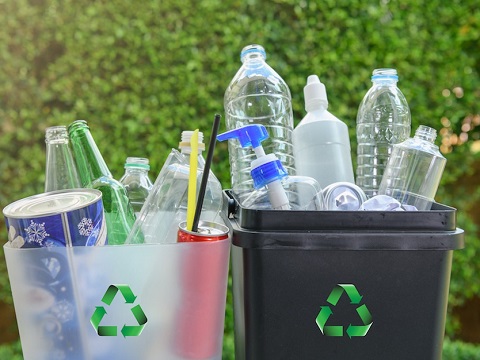Plastic bottles provide protection for their contents from spillage, maintaining freshness and preventing contamination. Furthermore, these containers are shatterproof preventing dangerous pieces from breaking off into dangerous pieces that could threaten people.
Plastic materials can easily be formed into various bottle shapes, adding both form and function. Some varieties even feature built-in handles, measurement indications and pouring lips for added functionality.
1. Environmentally Friendly
Plastic bottles provide significant environmental advantages. When manufactured from recyclable plastic such as PET (Polyethylene Terephthalate) or HDPE (High-Density Polyethylene), they can be recycled into new products without losing quality or integrity; thus saving oil, cutting greenhouse gas emissions, and helping conserve landfill space.
Plastic bottles made of other types, like polycarbonate, are less eco-friendly due to the chemical bisphenol-a (BPA), which leaches out of polycarbonate bottles into liquid and food contained within. BPA acts as a hormone disruptor and has been linked to reproductive problems and cardiovascular diseases.
Opting for glass water bottles or reusable ones instead of plastic will reduce your environmental footprint significantly. Production of both requires considerable energy; additionally, these materials produce sulphur dioxide emissions that contribute to acid rain as well as phosphates that pollute rivers and coastal seas by overburdening them with oxygen-depleting waste products.
Plastic bottles may seem easy to use and recycle, yet their environmental impacts go far beyond what many realize. Many of them end up littered around towns or as ocean debris patches like Pacific Garbage Patch. Unrecycled plastic can take hundreds of years to break down into microplastics – even when recycled!
2. Economical
Plastic is significantly lighter than its metal counterparts, which reduces energy needs in production and transportation, and lowers transportation costs to recycling centers. Furthermore, its lightness allows collection teams to easily transport plastic bottles for recycling.
Plastic is an economical material to produce bottles from. With its strength, shatterproof properties and optical qualities making it an excellent replacement for glass containers, plastic is also easy to mold into attractive shapes with its low cost making it the go-to packaging choice for soft drinks and other beverages.
Plastic bottles provide another advantage, in that they allow products like juices and smoothies to remain hygienic until consumed by consumers. This keeps their contents sanitary until consumed – especially important with products like juices.
Plastic bottles offer another economical advantage when it comes to packaging, shipping and refrigeration costs. According to one study conducted in 1996 by API (American Plastics Industry Council), switching from paper/aluminium/plastic cartons made gable-top milk cartons made for milk distribution with plastic pouches reduced manufacturing and distribution costs by 72% while simultaneously cutting energy usage related to refrigeration by 50% (API 1996). Furthermore, PET recycled bottles save an equivalent of 3.8 barrels of oil annually while helping reduce emissions and save landfill space – savings that also lower emissions while conserving oil conservation helps lower emissions while saving landfill space and emissions of greenhouse gases by conserving oil conservation measures such as those implemented through reduced emissions measures that reduce greenhouse gases from production/distribution/distribution costs reducing greenhouse gases by helping lower emissions from manufacturing/distribution costs; saving resources while helping save oil conservation is another economical measure used to save oil conservation measures, since oil conservation also saves landfill space is saved through recycling polyethylene terephthalate PET bottles recycle-saving equivalent of 3.8 barrels worth of oil conservation for recycling purposes thus contributing significantly towards lower greenhouse gas emissions reducing greenhouse gas emissions while saving landfill space too.
3. Durable
Plastic bottles come in all sorts of shapes, sizes, and colors, making it easier for brands to create distinctive bottle designs that stand out on shelves. Plus, their lightweight construction means less shattering upon impact compared to glass – which means easier shipping and transportation!
Polyethylene Terephthalate (commonly referred to as PET or PE) is one of the primary materials used in producing plastic bottles, as it’s both strong and chemical resistant, easily molding into various bottle shapes, transparent or opaque finishes and featuring features like handles, pouring lips and measuring indications.
Plastic has proven itself an extremely practical packaging material for items such as water, milk, soda and detergents despite its poor environmental reputation. Indeed, recent polling from YouGov revealed that most UK consumers view plastic bottles as the most practical, versatile and convenient form of packaging available today.
Once used bottles can be recycled into new products. This process helps reduce pollution and energy consumption while keeping landfills from becoming overburdened with waste. Recycling also keeps plastic out of the environment where it could harm wildlife or pollute soil and water sources.
4. Recyclable
When you drop off plastic bottles in your recycling bin, they get hauled to a material recovery facility (MRF). Here, they are separated out and processed through various stages until reaching an MRF, where they’re scanned for their resin identification code (RIC), which ranges from #1-7. Once processed at an MRF, these recycled PET materials are separated out for recycling purposes like making new bottles as well as products like carpet fiber, T-shirts or strapping material – at approximately 66% less energy consumption compared with virgin plastics!
MRFs also help save landfill space, since millions of empty water and soft drink bottles don’t end up sitting in holes on our planet’s surface. Furthermore, reduced oil usage for producing virgin plastics helps decrease greenhouse gas emissions as well.
One ton of recycled PET saves 3.8 barrels of oil. A reduction of just 50 million plastic water bottles used annually could save enough oil to power 190,000 homes for an entire year – and that’s only the start! Companies are working on producing more durable and reusable bottles made with plant-based resins that don’t contain BPA which has been considered dangerous in large doses and may pose a threat to children’s health.

